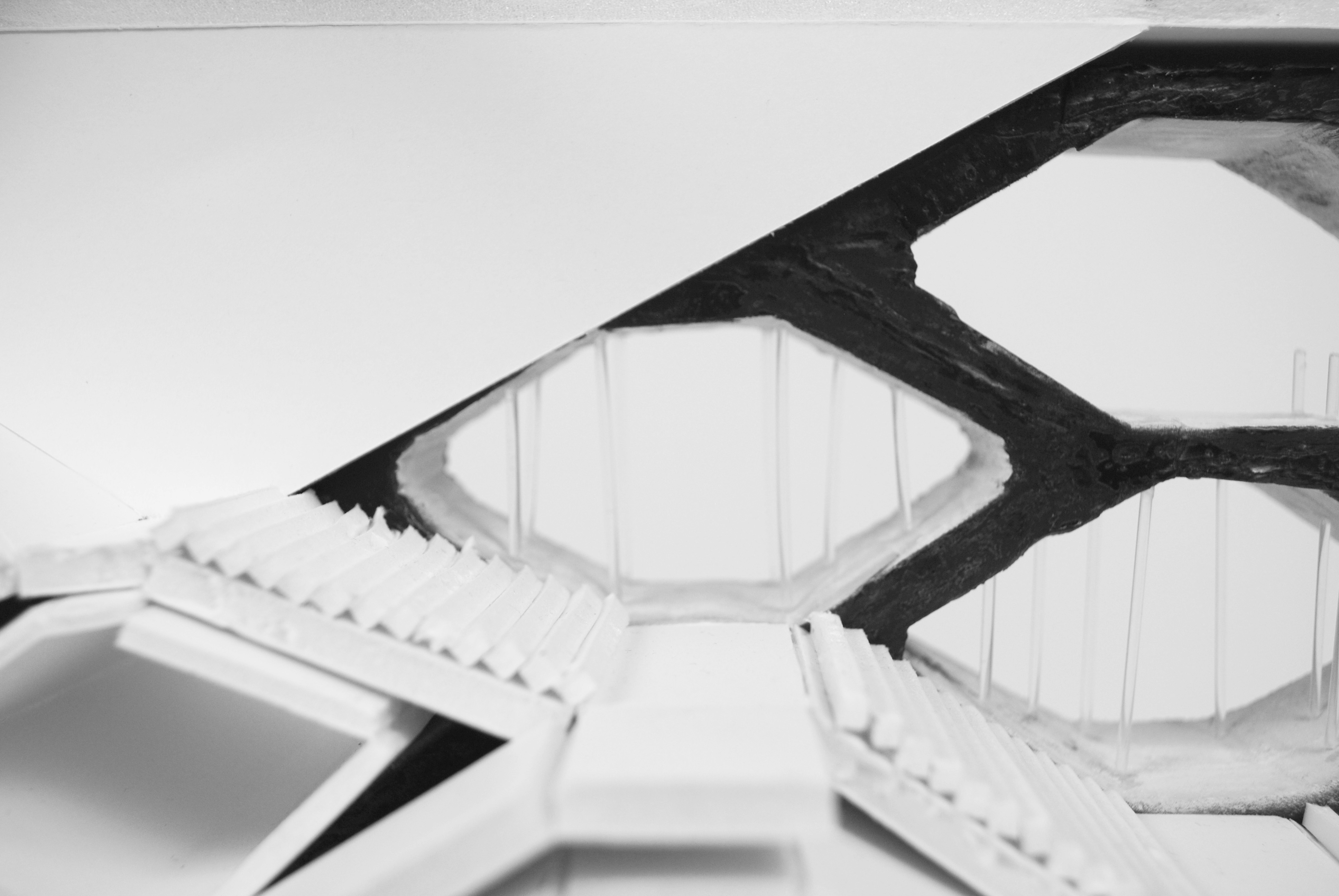

Lost and Found
Site: Manhattan, NY
Lost and Found is an exploration into the MTA lost item retrieval process. The project is situated at the corner of Avenue A and 14th Street and acts as an extension and access point for the new L train platform. The lost and found builds on this idea of spatial perceptions, using spatial illusion to drive the creation of a modular form. The tapered, diamond shaped hallways give the illusion that the hall extends further than its physical boundary.
There are clear, vertical tubes intersecting each diamond that house the lost items collected from the subway. The tubes are closer together at the diamond point to enforce the optical illusion even further.
The similar modules are organized to create a disorienting maze. The MTA employee office is located at the street level, and every night they load the new items into the top of the tubes. The longer a person waits to retrieve their lost item, the further it falls into the maze. As one gets deeper and deeper, the diamond shapes start to merge together, the tubes become scattered in an irregular pattern, and the
logics of the spatial system seem to break apart. At the very bottom, the items are spit out onto the floor of a vast room and fall into large piles with all the other unclaimed items. It is here that the search loses all organization.
Site: Manhattan, NY
Lost and Found is an exploration into the MTA lost item retrieval process. The project is situated at the corner of Avenue A and 14th Street and acts as an extension and access point for the new L train platform. The lost and found builds on this idea of spatial perceptions, using spatial illusion to drive the creation of a modular form. The tapered, diamond shaped hallways give the illusion that the hall extends further than its physical boundary.
There are clear, vertical tubes intersecting each diamond that house the lost items collected from the subway. The tubes are closer together at the diamond point to enforce the optical illusion even further.
The similar modules are organized to create a disorienting maze. The MTA employee office is located at the street level, and every night they load the new items into the top of the tubes. The longer a person waits to retrieve their lost item, the further it falls into the maze. As one gets deeper and deeper, the diamond shapes start to merge together, the tubes become scattered in an irregular pattern, and the
logics of the spatial system seem to break apart. At the very bottom, the items are spit out onto the floor of a vast room and fall into large piles with all the other unclaimed items. It is here that the search loses all organization.
The act of retrieving one’s item mimics the experience of the lost object’s path. The viewer feels this as they search through the seemingly endless, complex, organization and circulation. The perception is that the MTA lost and found is a mysterious mess of unsorted
objects. When in reality, the systematic sorting of items
has a simple, logical hierarchy, able to be understood by the layman.
has a simple, logical hierarchy, able to be understood by the layman.